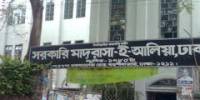CHAPTER I
INTRODUCTION
Why do we read newspapers? It seems the question is rhetorical since the definition of newspaper lends support to the view that newspaper is supposed to provide, “new information of recent events” (Reah, 2003: 4) and the answer is very simple. Nevertheless, the answer is not that easy because news is gathered, compiled, edited and then disseminated. In other words, there might be many ideological factors behind the construction of news. Reah (2003:2) suggests that the predominant purpose of newspaper is to provide news to its readers. However, newspaper not only provides news but also generates its ideology through news. Besides, the owners earn a lot by selling news. According to Reah (2003: 8) ‘the content’, ‘political stance’, and ‘editorial perspective’ have been almost always influenced by the owners of newspapers. Hence newspapers tend to sensationalize their news to grab readers’ attention and sell the news.
Problem statement
We cannot keep ourselves away from news. Everybody wants to be informed or updated with the news around them in modern or postmodern societies. Everyday we encounter many news, we also see many headlines when we read any newspaper. People are so busy with their routine lives that they hardly get time to read the entire stories in newspapers. Therefore, they scan the headlines of news and try to get the gist of the stories. Common people might think newspapers are credible sources of news. They tend to believe whatever is printed in the newspaper. Many people do not know how to read between the lines. The headlines may not be as innocent as they seem. Reah (2003: 11) points this out by suggesting that the readers should be critical and be able to identify the unsaid meanings of news. The headlines are used to attract readers’ attention through sensationalism. Such a colonizing tendency tends to make readers into consumers. Some journalists exaggerate news by sensationalizing headlines. Regarding this, Hicks (1998: 66) observes:
Many errors occur because the writer overstates the case in an effort to achieve impact: this is perhaps the journalist’s most common fault. It is this striving for effect that makes every rescuer ‘a hero’, every disturbance a ‘fracas’ every confusion a ‘chaos’ and every fire an ‘inferno’ (the word means hell)
Therefore, there is scope to ponder about the manipulation and sensationalism of news headlines from a Critical Discourse Analysis (henceforth, CDA) perspective and unearth and expose the real scenario of different news items to the general people. This study looks at headlines in newspapers from a critical perspective to show how they are used as attention seeking device to sensationalize news.
Purpose statement
In general people do not expect misinformation or exaggeration of news. Therefore, the intention of doing this research is to make people informed about the exaggeration of news. CDA takes the stance of the downtrodden (i.e. manipulated or misinformed by different news items) people. Uninformed readers tend to believe whatever comes in national dailies. Since, this research intends to make people skeptic and critical about any news published in newspapers, predominantly this research can help the students who would take CDA as a course for academic purpose. It can be helpful for the persons who are going to do research in media discourse or language studies. Since CDA is offered only at EastWestUniversity in Bangladesh limited number of researches has been done on CDA in Bangladesh. This research can encourage other universities to offer CDA at different universities of Bangladesh. Besides, any newspaper reader can be benefited from this research if the subject matter of this research is presented in conference or published in newspapers or in journals. In that way a vast community of people of Bangladesh can be beneficiaries of this study.
Research questions
This study addresses the following specific research questions:
1. What are the features of sensationalism?
2. How sensationalism takes place?
3. How ideology and power are practiced to colonize the readers’ minds and make them consumers of sensationalized news?
Delimitations
This research critically analyzes the headlines of two newspapers (The Daily Prothom Alo, and The Daily Jugantor) over a period of two months (i.e. June and July 2009). The Daily Prothom Alo, and The Daily Jugantor were selected because according to latest report of National Film Publication Directory (2006) The Daily Prothom Alo, and The Daily Jugantor have got the highest number of circulation among all newspapers in Bangladesh. The research deliberately avoids tabloids because tabloids are published to entertain people through their exaggerated news. The research is delimited to only Bengali newspapers because of limited number of English dailies readers.
Limitations
Since hardly any research has been done in the similar field of this research it is not supported by any previous research or study focusing in similar field of Bangladesh. This research might not be helpful for the all readers for instance- English dailies readers of Bangladesh would not be benefited directly from this research as this research focuses only Bengali newspapers of Bangladesh. The research is done on two consecutive months’ news. Nevertheless, result can change according to context.
Operational definitions
The operational definitions of this research are discussed below:
Sensationalism
Sensationalism is “a way of getting people’s interest by using shocking words or by presenting facts and events as worse or more shocking than they really are” (Hornby, 2005: 1382).
According to Cambridge Advanced Learner’s Dictionary (2008:1299), “When newspapers, television etc. intentionally present information in a way that is intended to be shocking or exciting.
So, exaggeration and manipulation of printed elements (words or phrases and pictures), in newspaper and discrepancy between headline and news story are perceived as sensationalism in this study.
Informed and uninformed readers
Informed readers are those who are aware of the socio-political issues of a society and can read critically between the lines of news. On the other hand, uninformed people are the people who are not aware of the socio-political issues of a society and cannot find the gaps between the lines of news. Nevertheless, uninformed readers do not mean uneducated people. An educated newspaper reader can be uninformed reader if the person remains uncritical about news that comes in newspapers.
CHAPTER II
LITERATURE RIVIEW
Newspapers in Bangladesh
According to Rahman (1984: 243), the history of emergence and spread of newspaper in Bangladesh is not preserved carefully and many documents had lost. The first newspaper named The Bengal Gazette in Bengal part of India was published in 1780 (Press Institute of Bangladesh; henceforth PIB, 2003:10). Some other newspapers were Calcutta Gazette (1784), Bengal Journal (1875), and Calcutta Chronicle (1786) ( PIB, 2003: 13). The first ever Bangla newspaper Shamachar Darpan was published by the missionaries of Shree Rampur in 23rd May 1818 (PIB, 2003: 21). It was a milestone in the history of Bangla Newspaper.
Raja Ram Mohon Roy published a Bangla newspaper named Shambad Koumudi in 1821 (PIB, 2003: 27). He also published another newspaper named Mirat ul Akhbar. In the editorial of Mirat ul Akhbar he wrote,
My only object is that I may lay before the public such articles of intelligence as may increase their. Experience and that to that extent of my abilities, I am may indicate to the rulers a knowledge of the real situation of their subjects and make the subjects acquainted with the established laws and customs of their Rulers, that the Rulers may the more readily find an opportunity of granting relief to the people: and the people may be put in possession of the means of obtaining protection and redress from their Rulers.
(quoted in PIB, 2003: 27).
In April 1863, school teacher Horinath Majumder published a monthly newspaper Grambarta prokasika (PIB, 2003:41). According to (PIB, 2003: 41) this newspaper was a critic of the government and the zaminders. Its objective was to create awareness among the public against the suppression and oppression of the ruling class.
In March 1864, Ramsundor Roy and Kashinath Metre co-edited Pabna Darpan (PIB, 2003: 41). It was also a critic of the government. According to this newspaper the government was not doing the right things and did not take any step to implement the rules and regulations taken.
In January 1867, school techer Rajmohan Chottopadhay published a newspaper from Bikrompur named Palli Biggan (PIB, 2003: 43) Its aim was to increase awareness regarding education among the people and to eliminate superstitions from the villages.
The first ever newspaper for the women was first published from Dhaka in 1906 named Vharat Mohila (PIB, 2003: 44). It was all about the problems women used to face in those days. It was edited by Sorojbala Datta.
In 1911, the first ever agriculture related Bangla newspaper was published from Sutrapur, Dhaka (PIB 2003: 45).
In 1932, the educated woman of Dhaka published a monthly newspaper Jayashri (PIB, 2003 : 45). Famous writer Leela Roy was the editor. According to (PIB, 2003: 45) Its main objective was to talk about social reformation as well as the improvement of education system.
After the division Poygam the first daily newspaper was published from Chittagong in 18 August 1947. It was edited by Foyez Mahmud (Rahman 1984: 251).
Maolana Akram Khan is the pioneer of Muslim Bangali jouranalists. In 19 October 1948 he shifted the renowned daily Azad from Calcutta to Dhaka . (Rahman 1984: 252). The Pakistan Observer was published in 19th March 194 . It was edited by Hamidul Haque Chowdhury.
The newspaper of Bangladesh faced many ups and downs during 1958-1971 (Rahman 1984: 254). Rahman (1984: 254) gives the following list of newspaper published from captured and free Bangladesh during the liberation war of 1971:
Shaswata Bangla, Jay Bangla, Biplobi Bangladesh, Banglar Bani, Durjeo Bangla, Songrami Bangla, Hushiar, Avijan, Banglar Mukh, Akota, Dahanol, Shadhin Bangla, Agrodut, Ranangon Mukti, Jagroto Bangla, Bangladesh, Mukto Bangla, Shadhin Bangladesh, Bongobashi, Sonar Bangla, Amar Desh, Akhoni, Biplobi Andolon, Rashtrdut, Chauk, Swadesh, The people, Rudrobina, Darpan, Ora Durjoy Ora Durbar, Lorai, Notun Bangla , Janata, Muktijuddho Muktijoddha, The Nation, Janmavumi, Desh Bangla, Amod, Protinidhi, Mayer Dak and Kalantor.
The government of Bangladesh published a newspaper under a publication board from Rajshai on 15th October 1976 nemed Dainik Bangla (Rahman, 1984: 255). Many other newspapers flourished gradually after liberation war of Bangladesh.
Sensationalism
Sensationalism has been started in the late 19th Century in the USA as a rivalry between two newspapers named The New York Journal and The New York World to only increase the selling of respective two papers (Dominick, 2002: 91). This sensationalized journalism included death, dishonoour, disaster, sex, murder, self-.promotion and human interest stories (Dominick, 2002: 91).
According to Dominick (2002:92), sensationalism increased journalists’ enthusiasm, energy, and verve to practice journalism along with aggressive reporting and investigative stories. Journalism has become an entertainment business, “We are in the entertainment business” (Murdoch in Harcup, 2004: 86). Since journalism is sensationalized there is always scope of distortion of truth.
Tickle the public, make ‘em grin,
The more you tickle, the more you will win;
Teach the public, you will never get rich,
You’ll live like a beggar and die in a ditch.
(quoted in Engel 1997:17 in Harcup , 2004: 86
Introduction to Critical Discourse Analysis (CDA)
CDA is not an old discipline in the academic world but it is going beyond academic field and explaining social issues effectively. Haque (2008: 111) states:
Though rapidly growing in popularity, CDA is a relatively young science. Its origin may be traced back many years ago, but the major developments in this field of linguistics have occurred in the last two decades of the twentieth century. In fact, the first ‘International Conference on Critical Discourse Analysis’ was held in May 2004.
CDA examines any kind of discourse which can communicate with us systematically. Unlike Discourse Analysis (DA) it goes beyond linguistic level of any discourse and tries to unearth the hidden social issues. Wodak (2001:1-2) says:
CDA regards ‘language as social practice’ (Fairclough and Wodak, 1997), and takes consideration of the contexts of language use to be crucial (Wodak, 2000c; Benke, 2000). Moreover, CDA takes a particular interest in the relation between language and power.
According to Fairclough and Wodak (1977: 271-80) in (Haque 2008: 113) the basic principles of CDA are:
1.CDA addresses social problems
2. Power relations are discursive
3. Discourse constitutes society and culture
4. Discourse does ideological work
5.Discourse is historical
6.The link between text and society is mediated
7.Discourse analysis is interpretative and explanatory
8.Discourse is a form of social action.
Among above Principles no. 1, 2, 3, 4, and 8 are directly related to this research.
Goals of CDA and its significance in Bangladesh
One of the major goals of CDA is to show the non apparent aspects of discourse by taking the stance of the downtrodden people of society. According to Haque (2008: 113), ‘CDA attempts to liberate the so-called ‘losers’ of social life’’ Besides, CDA discusses the power and ideology behind any discourse. CDA can be an effective way of scrutinizing and analyzing different discourses in everyday life of Bangladesh. For instance, both electronic and print media have become crucial and influential in Bangladesh, and people are encountering exaggerated or manipulated in other words sensationalized news everyday. Therefore, CDA can play the role of a tool to expose the hidden intention behind any news.
CDA and DA
Discourse Analysis (DA) entails written texts or speech. Nevertheless, CDA goes beyond written text or speech. The most significant distinction between DA and CDA is that DA delimits its study to the linguistic level and academia but CDA goes beyond linguistic level and considers social issues. Haque (2008: 115) explains:
DA analysts generally analyze a piece of discourse(spoken or written text) from a linguistic perspective, without focusing on discourse, ideology and power in terms of the social issues; on the other hand, CDA Analysts through the analysis of a piece of social discourse(spoken, written, semiotic, visual, etc. texts) focus on societal issues that perpetuate inequality.
News headlines from CDA perspective
Like other communities of the world, many people of Bangladesh start their day by reading or at least scanning the headlines of newspaper. Not only the urban people but also the village people can have the access to different national dailies, and sensationalized news headlines can affect a huge community of people of Bangladesh. Since, CDA deals with social issues CDA would be appropriate for analyzing the data of this research because DA cannot go beyond linguistic level of news headlines.
CHAPTER III
METHODOLOGY
Research design
This is a qualitative research to find out sensationalism in Bangladeshi newspapers. The research has been done on two national Bengali newspapers’ (The Daily Prothom Alo, and The Daily Jugantor) headlines of consecutively over a period of two months: September and October 2009 with respective news stories. Sensationalized or manipulative headlines were tabulated after observing all the pages of selected newspapers which have been included in this research as well. The diction, colour, position, and size of headlines have been studied. At the same time all respective news stories were also analyzed to find exaggeration, manipulation and discrepancy between headlines and news stories. Data has been analyzed from CDA perspective considering non apparent social issues, the ideology and power behind headlines discourse.
Theoretical framework
This research studies discursive practice of discourse and the complex nexus between its producer and the readers which is difficult to explain with other approaches to CDA. Therefore, this research adopted Fairclough’s (1995a) three dimensional approach to CDA. Haque (2008:117) states:
Fairclough (1995a) believes that his framework is appropriate for studying socio-cultural change in the sense that it foregrounds link between social practice and language, and for the systematic investigation of connections between the nature of social process and properties of language text.
According to Haque (2008:117) three dimensional approach is a critical approach which analyzes the ideology and power behind the discourse which are ‘generally not obvious to people who produce and interpret those text’
Fairclough (1995a: 97) suggests in three dimensional approach that discourse is simultaneously considered as ‘(i) a language text (spoken or written) (ii) discourse practice (text production and text interpretation) and (iii) sociocultural practice’.
One of the objectives of this research is to show how sensationalism occurs in newspapers (especially in headlines). This objective is related to text production and text interpretation. Another objective of this research is to find how ideology and power behind discourse have been used through discourse of manipulative headlines which can be analyzed by means of socio cultural practice of discourse. Therefore, three dimensional approach of Fairclough (1995a) would be appropriate for this study.
Sampling
Two Bangladeshi Bengali newspapers which are considered as national dailies have been taken as data for this research. They were collected over a period of two months (September and October 2009). According to the latest annual report on newspaper 2006 by Chalachitra Prokashona Adhidaptar Bangladesh, The Daily Protom Alo is the most popular and circulated newspaper in Bangladesh and its circulation number is 265250 while The Daily Jugantor’s circulation number is 264720. The reason for choosing the most circulated newspapers in Bangladesh is that these newspapers can influence a lot of people in Bangladesh negatively by publishing sensationalized news since they have got highest circulation in Bangladesh.
Data collection procedure
Newspaper headlines of two months have been collected for this research from the library newspapers of EastWestUniversity, Dhaka. Some headlines and respective news stories were collected from the library of Press Institute of Bangladesh (PIB), Dhaka. All pages of selected two newspapers were observed for two months. Sensationalized or manipulative headlines were copied and tabulated.
Data analysis procedure
At first, headlines were compared with the respective news stories to show the anomaly between the headline and news story. Secondly, headlines were analyzed to show how sensationalism is done in headlines. Thirdly, data was examined to demonstrate how different words, sentences, colour, and position of news are used to sensationalize news headlines in Bangladeshi newspapers. Finally, data was studied to explain how ideology and power were practiced to play the role of mechanism to colonize newspaper readers’ minds and make them consumer of sensationalized news. Three dimensional approach of Fairclough (1995a) in CDA is the tool for analyzing the data of this research.
Obstacles encountered
This research encountered some obstacles for example, no research has done on sensationalism in Bangladeshi newspaper therefore, no literature support in this field found while collecting data.
CHAPTER IV
RESULTS AND DISCUSSION
Introduction
This research scrutinized two national Bangla dailies (The Daily Prothom Alo and The Daily Jugantor) over a period of two months (September and October 2009) from a critical point of view. The data found from the study suggest that sensationalism has been done in following different ways: i) Adding spices with truth: when the news story contains truth and some fabrication, ii) Distortion: when the news shocks with its headline and image, iii) Discrepancy between headline and story: when there is anomaly between the headline and news story. Faorclough’s (1995a) three dimensional approach in CDA has been used to analyze the news.
Adding spices with news
The findings of this study imply not all journalists seem to practice adding spice with news where the news story contains truth and some fabrication. For instance, S.3 (in appendix) is an example of adding spice and exaggerating news. In this news Ala Robert of France has been given the name of Spiderman by the reporter of this news when Robert climbs on to Petronas tower in Malaysia. The headline of this news is read like, “Spiderman in the highest tower” which can be treated as adding spices to news. Significantly the production of this news is not very innocent rather it goes through the complex relationship of producer of the news discourse and the readers. The reporter knows very well that Spiderman is a better option than Ala Robert to grab readers’ attention and colonize their mind to make them consume the sensationalized news.
Distortion
In many cases news are made sensationalized by presenting the news more shocking. For instance, the headline in S.168 says that somebody fired in four cricketers’ house however the story says that Tamim, Nafis, Sakib and Rubel (four cricketers of Bangladesh national cricket team) live in same house. The news is made sensationalized by presenting the headline more shockingly.
S.168
Similar sort of example (like s.168) can be got in S. 169 where a girl is portrayed as retarded not physically challenged. The respective news reporter knew that people would buy the news if the headline of the news says that a physically retarded girl is going to jump from plane and she is doing so to fight against racism.
S. 169
Discrepancy between headline and story
This research proves that sometimes headlines and news are sensationalized with mixture of truth and fabrication and the anomaly between news and headline can be understood by reading the news story. For instance, S.61’s headline says that, ‘prohibition on meeting and newspaper’. Nevertheless the news discloses that the ruling government of Honduras restricted unapproved meetings and newspapers in some conditions. Another example of fabrication is S.64 where the news says a plan has been taken by government of making 2200 Parjatan centres in next 10 years in three steps though the headline does not explain the story and deceives the readers. Another example of similar kind of manipulation in headlines therefore sensationalism is found in S.3 where it has been said that there is only one police for the security of one thousand people in Chittagong. Interestingly, the news says the number of people is counted including the people come and leave Chittagong everyday. Moreover, the actual number is 950. S.90 contains similar example as well.
Finding in terms of research questions
This research addressed the following specific research questions:
1. What are the features of sensationalism?
2. How sensationalism takes place?
3. How ideology and power are practiced to colonize the readers’ minds and make them consumers of sensationalized news?
Findings in terms of research questions suggest that the features of sensationalism are colour of headline (red, black, purple), font size of headline, treatment of news (top story, box), picture of victim and others associated with the respective news, the position of news (page number, upper or lower fold). Interestingly, all these features work together and support sensationalism to take place. Simultaneously the news reporters practice their ideology of being superior since they are ‘informed’ group and readers are ‘uninformed or less informed’ group and thus practice power over readers to consume the sensationalized news and ultimately practice consumerism by marketizing sensationalized news. For example, s.171 contains the news of bomb attack on Barrister Sheikh Fazle Nur Tapash. The headline is given in red colour and a big picture of the spot is also given in the news. The news also contains a small photograph of the victim to touch the readers’ heart. The headline also ensures that the victim is a member of parliament (MP). News regarding a terrorist attack on an MP could be sold like hot cake therefore, the news is presented in front page of that days newspaper.
S.171
S.73 contains a headline which is very touchy. The intro says that the son of I G (prisons) named Shafiul Islam Khan (16) stabs his parents and sisters waking suddenly from nap. The news includes picture of victims to make the news more emotional. Though it gives the answers of ‘what’; ‘who’; ‘how’ and ‘where’ it does not give the answer of why though the news story is quite big.
S.73
The following news is about former minister to home affairs of Bangladesh. Since everybody knows that Sheikh Hasina was attacked by a lethal grenade attack and incumbent minister to home affairs of Bangladesh of that time said one of the attackers was Joj Miah. As this is a critical issue and every body wants to know about 21st August grenade attack on Sheikh Hasina the news is given in the upper fold of front page.
S.173
S.177 is an example of sheer sensationalism. The news contains a very big picture where two victims’ former apperence is shown. The faces of victims after the accident are also shown to make a comparison with previous condition. The news story is dramatized and victims’ dream of becoming bride has ruined is also interpreted to grab readers attention to make them to consume the news.
S.177
S.126 explains how a home is ruined however with dramatization and personification. The house is compared with a living object to touch readers mind and to manipulate readers to buy the news. The picture plays the role of an additional element to make the news more shocking.
S.126
The following news could be a great news for every woman who wants to be mother. However, ironically and interestingly Bruni, first lady of France would not be happy after listening the following news since it is based on a rumour. Nevertheless, the respective news reporter made the news sensationalized by including the headline and the smiling picture of Bruni. The news is given in a box to get attention of readers. The intention of this news is just to marketize news to earn money though it is not true.
S.121
S.1 in appendix has been sensationalized by showing discrepancy between the headline and the story. The headline is written in red colour with large font size and the news is made the show window of that day’s newspaper. The headline of S.1 states that a case of defamation of 25 crore taka is filed against erstwhile caretaker government’s adviser Major Gen. (Rt.) Matin however, the news reveals that a case of defamation of 25 crore taka is filed against erstwhile caretaker government’s adviser Major Gen. (Rt.) Matin and ex-secretary of ministry of shipping. The intention of the headline is to grab readers’ attention and sell the news to the readers, the downtrodden of the society.
According to the headline of the news (S.8 in appendix) the mentioned college does not have any teacher nevertheless in reality, since the college does not have any permanent teacher classes of that college are taken by hired teachers. Therefore, discrepancy between headline and news story is very clear.
In S..9 ‘Prime minister is furious’ is written in bold and big font whereas the cause of anger (severe attack on Anu Muhammad) which is much more important is written in small font. It proves that news is collected, then constructed and at last disseminate through newspapers in whichever way the reporters want to disseminate. The sensationalized news reporters not only sell the news but also practice their ideology and power over ‘downtrodden’ (the readers) of society since the readers are uninformed or less informed.
Ai“b †PŠayix I Ai“bv wek¦v‡mi gayPw›`ªgv (s.11) is a very manipulative and deceptive headline because the news story explains that Arun chowdhury wrote a drama named ‘Modhuchondrima’ which is directed by Aruna Biswas. However, the reporter gave the word honeymoon in quotation mark to provoke people to read the news at once since many readers do not know how to read between the lines.
S.11
The treatment of the news S.15 is crucial. The news says that a charge sheet filed against Khalda, and Tarek zia.. It is made show window with the picture of Khaleda Zia surrounded by police while she was going to the hearing of Zia Orphanage Trust case to marketize the news. Since Khaleda Zia is one of the most important persons in Bangladesh her picture with police can make the news attractive and therefore, the reporter deliberately used that picture.
The headline given in S.32 is interesting. According to the news eleven cricketers of Bangladesh national team exercise before a match nonetheless the headline is used to give an image of battle field. There is a famous Bangla movie named “Ora Egaro Jon” which is a film made on liberation war of Bangaldesh.
Based on the findings of the study it can be said news reporters (not all) do not give any hint about the story in the headlines and it seems that they do not like to follow inverted pyramid style for news story and make the news sensationalized. For example, the headline in S.115 does not give any hint why Shafiullah is called coward and liar. Sometimes, reporters sensationalize news by mixing two news. For example, the reporter in S.116 combined two topics regarding Michael Jackson and shocked the readers. The most important thing is that journalists used Famous names like, Michael Jackson, Elvis, Maradona with some news because they knew that anything and everything about celebrities would be sold and it was easy to colonize readers’ mind by using those names.
Therefore, the ideology behind sensationalized news is that to entertain the reader and more importantly manufacture readers’ concern for buying the sensationalized news and thus colonize the readers’ mind to consume whatever comes in newspaper. Another significant point is that when news reporters practice sensationalism they not only make money rather they practice the power of being superior by proving themselves ‘informed’ and readers ‘uninformed’ and thus practice consumerism.
CHAPTER V
CONCLUSION
Introduction
Though the idea of news (soft or hard) is different the intention of reading newspaper is same to a great extent. Everybody wants to be informed. Newspaper gives us different news with exaggeration, sensationalism and sometimes fabrication. This research has been done on two newspapers (The Daily Prothom Alo and The Daily Jugantor) consecutively over a period of two months (September and October 2009). Journalists collect, reshape and then produce news with sensationalism and marketize it and colonize readers’ mind to buy sensationalized news. Therefore, readers should be critical about news and learn to read between the lines.
Summary of the Findings
This research analyzed i) the features of sensationalism ii) the ways in which sensationalism takes place and iii) the process of practicing power and ideology to colonize readers’ mind to consume sensationalized news. The research is done from CDA perspective and Fairclough’s (1995a) three dimensional approach in CDA is adopted as the theoretical support for analyzing the data. The news reporters practice sensationalism in different ways. They use different colours in headline (red, black, purple). They use different font size while writing headlines. Sometimes diverse treatment is given to news (top story, box). Journalists include picture of victim and others associated with the respective news to practice exaggeration. Sometimes importance of the news is shown by the position of news (page number, upper or lower fold). Fascinatingly, all these features work together and support sensationalism to take place. Simultaneously the news reporters practice their ideology of being superior since they are ‘informed’ group and readers are ‘uninformed or less informed’ group (and the downtrodden of the society since they do not know the mechanism of sensationalism in news) and thus practice power over readers to consume the sensationalized news and ultimately practice consumerism by marketizing sensationalized news.
Contribution to Research
CDA is not very old in Bangladesh and a few researches have been done from a critical perspective as CDA is offered only at EastWestUniversity as a course. On the contrary, sensationalism in the media is quite common in Bangladesh. However, no research has been done on sensationalism in news discourse from CDA perspective in Bangladeshi context. Since this is the only research done in terms of sensationalism in news discourse, this research can contribute to other research related to media discourse especially the language of newspaper and how it can be demystified from a critical point of view.
Practical Implication(s)
Since this research scrutinizes sensationalism in news in Bangladeshi Bangla newspapers it can help readers to read Bangla newspapers between the lines and understand the intention of constructing news. The findings of this study state that not all news reporters seem to practice the power of being informed and letting readers to be informed with sensationalized news stories since readers do not know the news story. In other words a hierarchical position is made between the reporters and the readers where reporters or journalists become superior and powerful. (see Wodak and Meyer, 2001). This research would help the readers to decipher the discourse of news and understand the ideology of news discourse producer.
Recommendation
Based on this study, the findings seem to suggest that journalists sensationalize news in different ways and make the readers consume exaggerated or manipulated news. Journalists should not forget about ethics in terms of their responsibilities and integrity towards the readers while writing the news. According to ethicists Christians et al. (in Bunton, et al, 1999: 35) media writers have five following loyalties: i) loyalty to themselves, ii) loyalty to public relations clients, news sources, newspaper and magazine readers, iii) loyalty to employers, iv) loyalty to profession and colleagues, and v) loyalty to society. Since journalists have to write within a period of short time sometimes they cannot be loyal to society and the readers. In this case journalists need to make a balance among the loyalties. More importantly readers should be aware of the ideology behind any news and need to be skeptic about news. For example, readers should understand that a picture of any suspect in any news story does not mean the person is proved guilty and if the person is said guilty of something by the news reporter that has been said to make the news sensationalized. According to article 39 (1) b of the Constitution of the People’s Republic of Bangladesh (As modified up to 17 May, 2004) (www.pmo.gov.bd/constitution), the freedom of press is guaranteed by the government, unless it violates democracy, decency or morality and creates defamation or incitement. Ironically not all journalists seem to be are not following the constitution while writing news stories. They should remember when they sensationalize news they violate the constitution which is a great offence. Readers should be skeptic about the headlines and should not believe whatever they see in the newspaper. Sometimes headlines are deceptive. In that case readers should read the full news story. If the story is deceptive then readers should judge the news with other sources. Readers should not forget that news are collected, reshaped, and then disseminated by the journalists where readers are considered as uninformed as or less informed than journalists and news reporters can let the readers know in whichever way reporters like. Nevertheless, readers should not allow the news reporters to practice power over them and colonize their mind by reading news stories between the lines.
Further/ Future Studies
Since hardly any research has been done on newspapers of Bangladesh from CDA perspective this research has been delimited to two national Bangla newspapers of Bangladesh. So, more researches can be done on other national and local dailies, weeklies and so on of Bangladesh. As interview is not included in this study, interviews of readers, journalists and news experts could be considered for future studies.
Conclusion
Like other countries of the world sensationalism has spread in Bangldeshi newspapers. Every day uncritical, uninformed or less informed readers are deceived by the news as they believe news stories without any doubt. Nevertheless, there is no scope of being uncritical regarding news. CDA can be good option to understand a text. Wodak and Meyer (2001: 10) say, “One of the aims of CDA is to ‘demystify’ discourses by deciphering ideologies”. Since CDA deals with social issues the discursive discourse of sensationalized news could be analyzed effectively from a critical perspective.
















